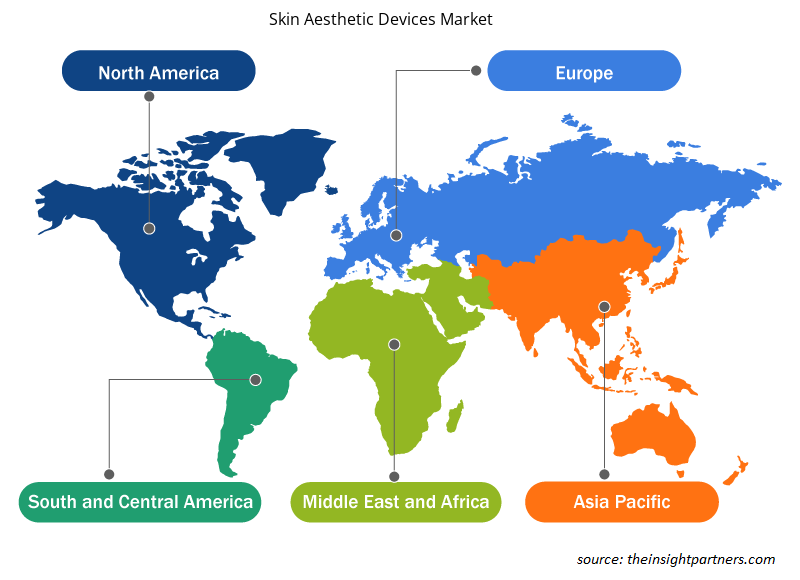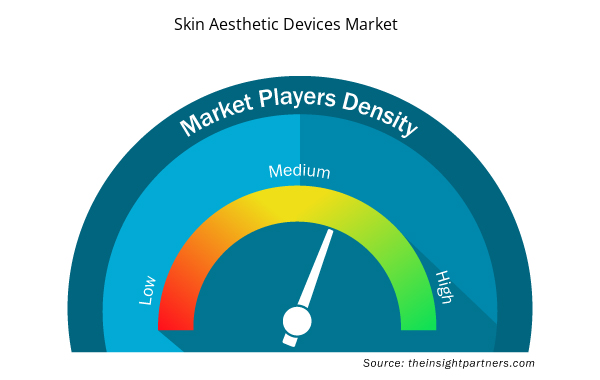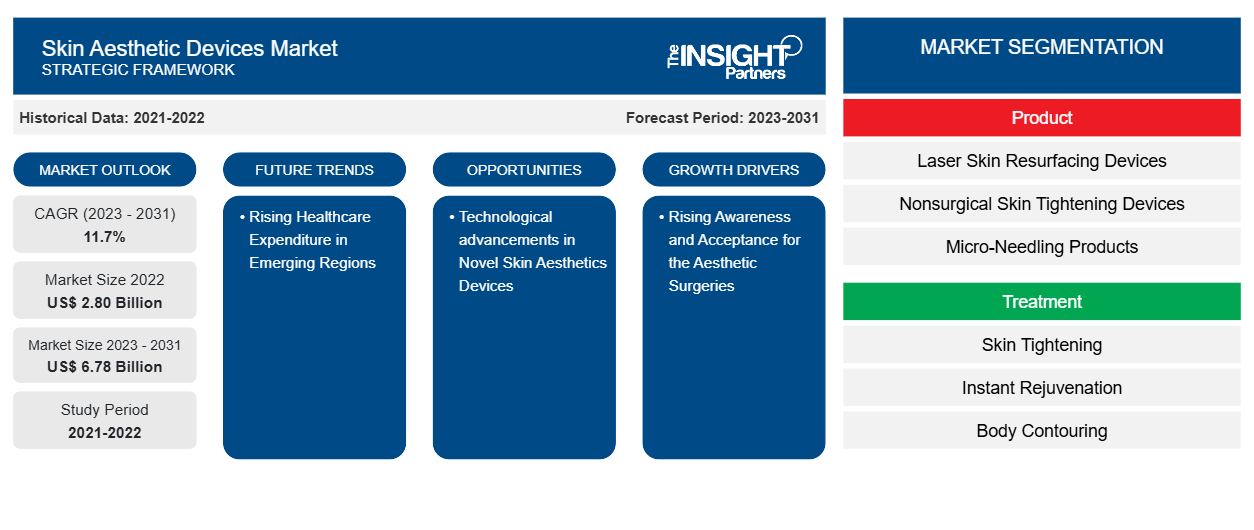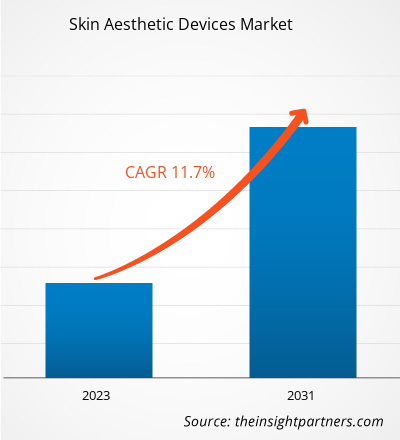皮肤美容设备市场规模预计将从 2022 年的 28 亿美元增至 2031 年的 67.8 亿美元。预计 2023-2031 年市场复合年增长率将达到 11.7%。新型皮肤美容设备的技术进步很可能仍是皮肤美容设备市场的一个关键趋势。
皮肤美容仪器市场分析
皮肤美容设备用于整容手术,这是一种改善人外貌的手术。这些设备包括手术和非手术设备,可用于医疗或非医疗目的。非侵入性和微创手术的日益普及、皮肤病患病率的上升以及人们对美容设备的认识不断提高是皮肤美容设备市场增长的因素。
皮肤美容设备市场概况
采用非手术程序的人数有所增加,包括 A 型肉毒杆菌毒素、软组织填充剂、化学剥皮、激光脱毛和微晶换肤术。非手术美容程序为各种问题提供微创治疗,例如皮肤年轻化、减少皱纹、身体塑形和头发修复。它们几乎不需要停机时间,并提供明显的效果。根据美国整形外科医师协会 (ASPS) 于 2022 年发布的报告,2022 年全球进行了 1880 万次非手术手术,在过去四年中增长了 57.8%。随着对美容增强的污名逐渐消退,发展中国家越来越多的人选择非手术治疗,有利于皮肤美容设备市场的增长。
定制此报告以满足您的需求
您可以免费定制任何报告,包括本报告的部分内容、国家级分析、Excel 数据包,以及为初创企业和大学提供优惠和折扣
- 获取此报告的关键市场趋势。这个免费样品将包括数据分析,从市场趋势到估计和预测。
皮肤美容设备市场驱动因素和机遇
美容整形的认知度和接受度不断提高,市场前景看好
消费者对现有美容外科治疗的认识不断提高,推动了市场的增长。互联网资源的激增和社交媒体平台的增长对于教育人们了解市场上存在的大量美容治疗至关重要。对年轻、完美肌肤的渴望已经变得普遍,人们积极寻求最新的进步来帮助他们达到理想的美容效果。此外,老龄化人口的增加也促进了市场的增长。
医疗支出上涨——新兴市场的机遇
亚太地区、南美洲和中美洲等发展中经济体的人们为了改善容貌,在美容和复原手术上的支出正在迅速增加。医疗保健支出的增加使得专业人士能够采用先进的技术进行美容手术。在预测期内,亚太地区预计将成为所有主要地区中增长最快的医疗美容市场,中国、日本、印度和韩国等国家将成为市场增长的主要贡献者。快速的城市化、医疗保健提供者对改善基础设施的投资增加、民众意识的提高以及一系列先进产品和技术的普及都促进了该市场的增长。
皮肤美容设备市场报告细分分析
有助于得出皮肤美容设备市场分析的关键部分是产品类型和最终用户。
- 根据产品,皮肤美容设备市场细分为激光换肤设备、非手术紧肤设备、微针产品和光疗设备。激光换肤设备细分市场在 2023 年占据最大市场份额。此外,非手术紧肤设备细分市场预计将在 2023-2031 年期间以最高复合年增长率增长。
- 根据治疗方式,皮肤美容设备市场细分为皮肤紧致、即时嫩肤、身体塑形、激光脂肪抽吸和其他治疗。2023 年,皮肤紧致部分占据了皮肤美容设备市场的最大份额。
- 按终端用户划分,市场分为医院和美容诊所、医疗水疗中心和美容院以及家庭环境。2023 年,医院和美容诊所占据了市场主导地位。
皮肤美容设备市场份额按地区分析
皮肤美容设备市场报告的地理范围主要分为五个区域:北美、亚太、欧洲、中东和非洲、南美和中美。
北美占据了市场主导地位。该地区整容手术数量增加、家庭环境中微创美容治疗的采用率上升以及消费者在化妆品上的支出不断增长等因素推动了该地区的增长。根据 2022 年发布的 ISAPS 报告,美国整形外科医生进行了 609,231 次面部年轻化手术。这一增长推动了对整容手术中使用的皮肤美容设备的需求。此外,由于医疗旅游业的发展和产品发布的增加,市场可能会在加拿大和墨西哥获得增长机会。预计亚太地区未来几年将以最高的复合年增长率增长。
皮肤美容设备市场区域洞察
Insight Partners 的分析师已详尽解释了预测期内影响皮肤美容设备市场的区域趋势和因素。本节还讨论了北美、欧洲、亚太地区、中东和非洲以及南美和中美洲的皮肤美容设备市场细分和地理位置。

- 获取皮肤美容设备市场的区域特定数据
皮肤美容设备市场报告范围
| 报告属性 | 细节 |
|---|---|
| 2022 年市场规模 | 28亿美元 |
| 2031 年市场规模 | 67.8亿美元 |
| 全球复合年增长率(2023 - 2031) | 11.7% |
| 史料 | 2021-2022 |
| 预测期 | 2023-2031 |
| 涵盖的领域 | 按产品
|
| 覆盖地区和国家 | 北美
|
| 市场领导者和主要公司简介 |
|
皮肤美容设备市场参与者密度:了解其对业务动态的影响
皮肤美容设备市场正在快速增长,这得益于终端用户需求的不断增长,这些需求源于消费者偏好的不断变化、技术进步以及对产品优势的认识不断提高等因素。随着需求的增加,企业正在扩大其产品范围,进行创新以满足消费者的需求,并利用新兴趋势,从而进一步推动市场增长。
市场参与者密度是指在特定市场或行业内运营的企业或公司的分布情况。它表明在给定市场空间中,相对于其规模或总市场价值,有多少竞争对手(市场参与者)存在。
在皮肤美容设备市场运营的主要公司有:
- 强生公司
- 艾尔建公司
- SYNERON 医疗有限公司
- Hologic 公司
- 科美尼斯有限公司
- 梅尔茨制药有限公司
免责声明:上面列出的公司没有按照任何特定顺序排列。

- 了解皮肤美容设备市场的主要参与者概况
皮肤美容设备市场新闻和最新发展
皮肤美容设备市场通过收集一手和二手研究后的定性和定量数据进行评估,其中包括重要的公司出版物、协会数据和数据库。以下是皮肤美容设备市场的发展列表:
- Solta Medical 业务宣布在美国推出 Clear + Brilliant Touch 激光,这是该公司的下一代 Clear + Brilliant 激光。Clear + Brilliant Touch 激光通过为所有年龄和皮肤类型的患者提供两种波长的好处,提供定制且更全面的治疗方案。(来源:Solta Medical,新闻稿,2021 年)
- Alma 推出了新款 Alma Hybrid,旨在为皮肤年轻化和疤痕修复提供无限的烧蚀、非烧蚀和热疗选择。Alma Hybrid 结合了 CO2 激光、1570nm 激光和 IMPACT 经表皮递送 (TED) 的功效,创造了独特的协同效应。(来源:Alma Lasers,公司网站,2020 年)
皮肤美容设备市场报告覆盖范围和交付成果
“皮肤美容设备市场规模和预测(2021-2031)”报告对市场进行了详细分析,涵盖以下领域:
- 范围内所有主要细分市场的全球、区域和国家层面的市场规模和预测
- 市场动态,如驱动因素、限制因素和关键机遇
- 未来主要趋势
- 详细的 PEST 和 SWOT 分析
- 全球和区域市场分析涵盖关键市场趋势、主要参与者、法规和最新市场发展
- 行业格局和竞争分析,涵盖市场集中度、热点图分析、知名参与者和最新发展
- 详细的公司简介
- 历史分析(2 年)、基准年、预测(7 年)及复合年增长率
- PEST 和 SWOT 分析
- 市场规模价值/数量 - 全球、区域、国家
- 行业和竞争格局
- Excel 数据集


- Dairy Flavors Market
- Analog-to-Digital Converter Market
- Advanced Planning and Scheduling Software Market
- Microplate Reader Market
- Skin Tightening Market
- Industrial Valves Market
- Nitrogenous Fertilizer Market
- Photo Printing Market
- Excimer & Femtosecond Ophthalmic Lasers Market
- Oxy-fuel Combustion Technology Market

Report Coverage
Revenue forecast, Company Analysis, Industry landscape, Growth factors, and Trends

Segment Covered
This text is related
to segments covered.

Regional Scope
North America, Europe, Asia Pacific, Middle East & Africa, South & Central America

Country Scope
This text is related
to country scope.
Trends and growth analysis reports related to Life Sciences : READ MORE..
The Insight Partners performs research in 4 major stages: Data Collection & Secondary Research, Primary Research, Data Analysis and Data Triangulation & Final Review.
- Data Collection and Secondary Research:
As a market research and consulting firm operating from a decade, we have published and advised several client across the globe. First step for any study will start with an assessment of currently available data and insights from existing reports. Further, historical and current market information is collected from Investor Presentations, Annual Reports, SEC Filings, etc., and other information related to company’s performance and market positioning are gathered from Paid Databases (Factiva, Hoovers, and Reuters) and various other publications available in public domain.
Several associations trade associates, technical forums, institutes, societies and organization are accessed to gain technical as well as market related insights through their publications such as research papers, blogs and press releases related to the studies are referred to get cues about the market. Further, white papers, journals, magazines, and other news articles published in last 3 years are scrutinized and analyzed to understand the current market trends.
- Primary Research:
The primarily interview analysis comprise of data obtained from industry participants interview and answers to survey questions gathered by in-house primary team.
For primary research, interviews are conducted with industry experts/CEOs/Marketing Managers/VPs/Subject Matter Experts from both demand and supply side to get a 360-degree view of the market. The primary team conducts several interviews based on the complexity of the markets to understand the various market trends and dynamics which makes research more credible and precise.
A typical research interview fulfils the following functions:
- Provides first-hand information on the market size, market trends, growth trends, competitive landscape, and outlook
- Validates and strengthens in-house secondary research findings
- Develops the analysis team’s expertise and market understanding
Primary research involves email interactions and telephone interviews for each market, category, segment, and sub-segment across geographies. The participants who typically take part in such a process include, but are not limited to:
- Industry participants: VPs, business development managers, market intelligence managers and national sales managers
- Outside experts: Valuation experts, research analysts and key opinion leaders specializing in the electronics and semiconductor industry.
Below is the breakup of our primary respondents by company, designation, and region:

Once we receive the confirmation from primary research sources or primary respondents, we finalize the base year market estimation and forecast the data as per the macroeconomic and microeconomic factors assessed during data collection.
- Data Analysis:
Once data is validated through both secondary as well as primary respondents, we finalize the market estimations by hypothesis formulation and factor analysis at regional and country level.
- Macro-Economic Factor Analysis:
We analyse macroeconomic indicators such the gross domestic product (GDP), increase in the demand for goods and services across industries, technological advancement, regional economic growth, governmental policies, the influence of COVID-19, PEST analysis, and other aspects. This analysis aids in setting benchmarks for various nations/regions and approximating market splits. Additionally, the general trend of the aforementioned components aid in determining the market's development possibilities.
- Country Level Data:
Various factors that are especially aligned to the country are taken into account to determine the market size for a certain area and country, including the presence of vendors, such as headquarters and offices, the country's GDP, demand patterns, and industry growth. To comprehend the market dynamics for the nation, a number of growth variables, inhibitors, application areas, and current market trends are researched. The aforementioned elements aid in determining the country's overall market's growth potential.
- Company Profile:
The “Table of Contents” is formulated by listing and analyzing more than 25 - 30 companies operating in the market ecosystem across geographies. However, we profile only 10 companies as a standard practice in our syndicate reports. These 10 companies comprise leading, emerging, and regional players. Nonetheless, our analysis is not restricted to the 10 listed companies, we also analyze other companies present in the market to develop a holistic view and understand the prevailing trends. The “Company Profiles” section in the report covers key facts, business description, products & services, financial information, SWOT analysis, and key developments. The financial information presented is extracted from the annual reports and official documents of the publicly listed companies. Upon collecting the information for the sections of respective companies, we verify them via various primary sources and then compile the data in respective company profiles. The company level information helps us in deriving the base number as well as in forecasting the market size.
- Developing Base Number:
Aggregation of sales statistics (2020-2022) and macro-economic factor, and other secondary and primary research insights are utilized to arrive at base number and related market shares for 2022. The data gaps are identified in this step and relevant market data is analyzed, collected from paid primary interviews or databases. On finalizing the base year market size, forecasts are developed on the basis of macro-economic, industry and market growth factors and company level analysis.
- Data Triangulation and Final Review:
The market findings and base year market size calculations are validated from supply as well as demand side. Demand side validations are based on macro-economic factor analysis and benchmarks for respective regions and countries. In case of supply side validations, revenues of major companies are estimated (in case not available) based on industry benchmark, approximate number of employees, product portfolio, and primary interviews revenues are gathered. Further revenue from target product/service segment is assessed to avoid overshooting of market statistics. In case of heavy deviations between supply and demand side values, all thes steps are repeated to achieve synchronization.
We follow an iterative model, wherein we share our research findings with Subject Matter Experts (SME’s) and Key Opinion Leaders (KOLs) until consensus view of the market is not formulated – this model negates any drastic deviation in the opinions of experts. Only validated and universally acceptable research findings are quoted in our reports.
We have important check points that we use to validate our research findings – which we call – data triangulation, where we validate the information, we generate from secondary sources with primary interviews and then we re-validate with our internal data bases and Subject matter experts. This comprehensive model enables us to deliver high quality, reliable data in shortest possible time.


 获取此报告的免费样本
获取此报告的免费样本